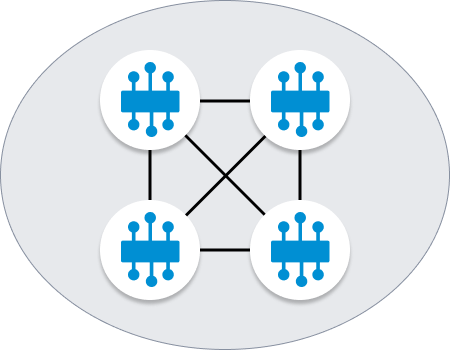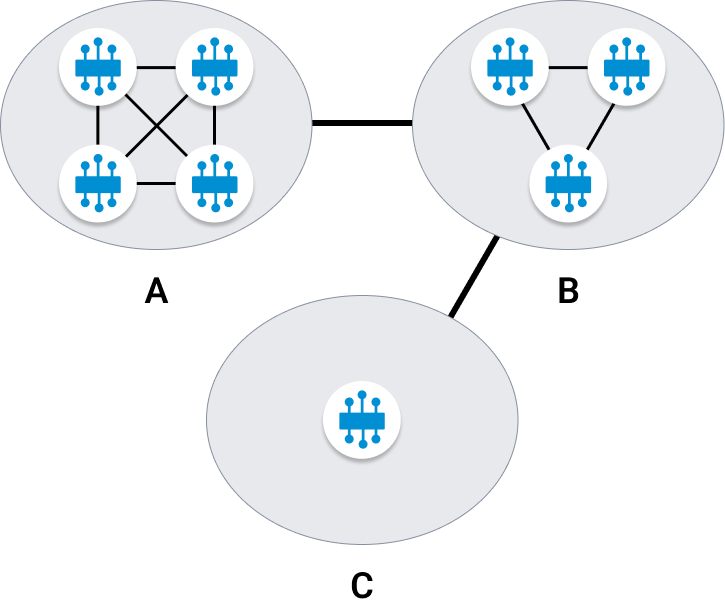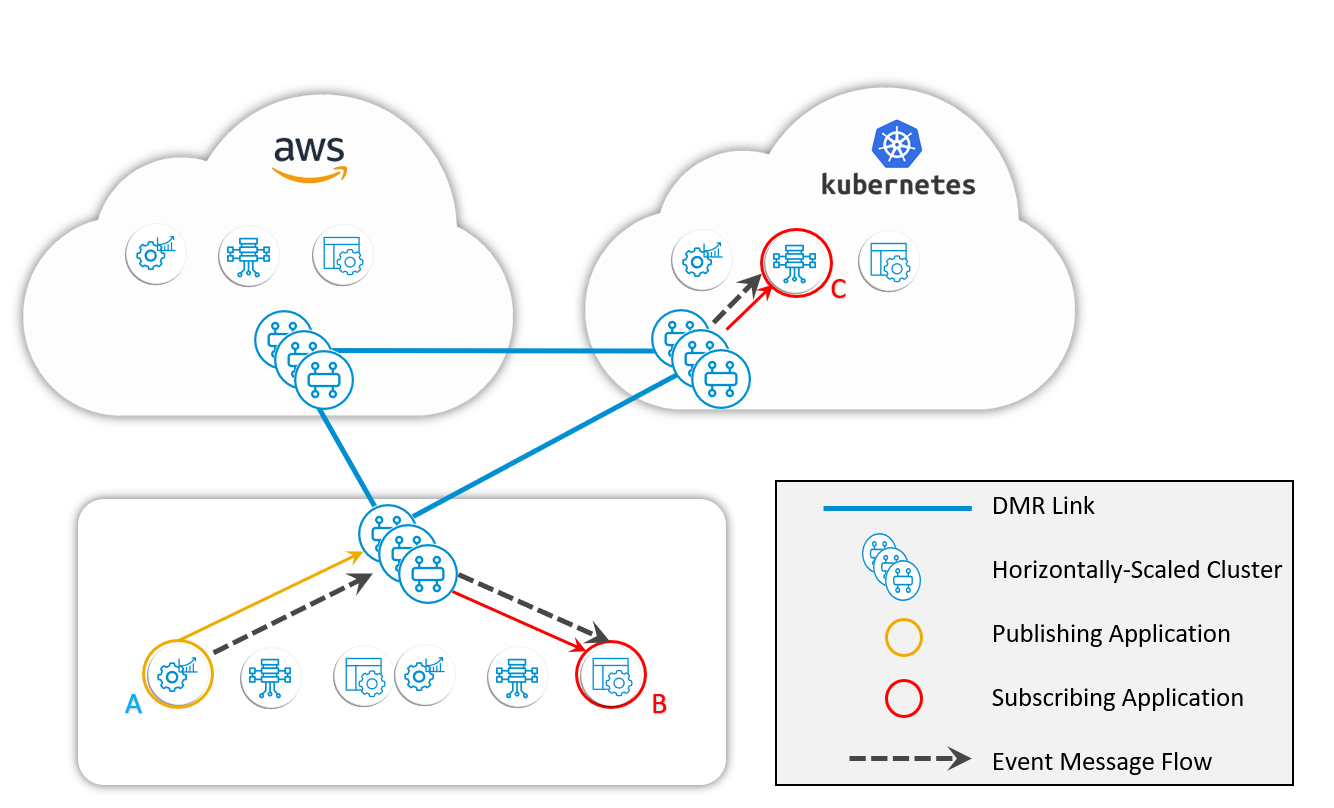Dynamic Message Routing
The underlying technology for an event mesh is Dynamic Message Routing (DMR). As your enterprise grows, you may find that your individual event broker services (or nodes) are not sufficient to handle the demands of your business. At some point even the largest, most generously provisioned node has its limits, but these can be overcome by networking several nodes together and spreading the load among the participants. In this way, multiple nodes can be connected together to service loads far in excess of that possible by a single one.
Enterprise applications also become distributed across multiple sites—which can include multiple public and private clouds —driving the need for an easy way to intelligently share information between all these locations and interfaces. For example, your organization may have on-premises applications using event broker services that need to connect to cloud services.
Dynamic Message Routing (DMR) is a mechanism that allows connected nodes to automatically determine how to forward event messages within the same site (horizontal scaling) or between sites (multi-site scaling) to exchange subscription information. With an event mesh, clients don't need to know about other sites in the network. Once the relationships between event broker services are established by the administrator, the event brokers dynamically discover how to route messages. Client applications don't have to take any special action to publish or consume messages across the mesh. They simply go about their business of exchanging messages without considering how to get those messages where they need to go. With DMR, you can move any applications within the mesh, or change the interests of those applications, and the mesh automatically updates the routing—without any intervention.
DMR supports two basic use cases: horizontal scaling and multi-site scaling. More complicated topologies are possible. If the use cases discussed here don't address your needs, contact SAP for assistance with designing and implementing your DMR mesh.
Horizontal Scaling
For horizontal scaling, you connect brokers together to create a DMR cluster. Each node (event broker service) in the cluster has a connection to every other node. These connections within the same cluster are called internal links; collectively, we refer to this as a "full mesh" of links. Within this fully-meshed cluster, each node is aware of all the others so that every event published in the network is seamlessly routed to the consuming applications.
DMR clusters are typically used for software and hardware event brokers at the same site. Advanced event mesh for SAP Integration Suiteevent broker services are usually set up as single-node cluster and don't use horizontal scaling.

Multi-Site Scaling
In multi-site scaling, you connect two or more clusters together. Connections between clusters are called external links. Each cluster is connected together via a gateway node in each cluster.

Message Flow in an Event Mesh
Let's take a look at how DMR works in a scenario. The diagram below shows a horizontally-scaled cluster on-premises, which is connected to a DMR cluster in the public cloud (AWS in the example) and another cluster (Kubernetes in the example).
A publishing application (A) comes online and publishes to a topic, let's say tools/orders. A consuming application (B) in the same cluster comes online, binds to its queue, and subscribes to topic tools/orders. Events flow from application A to application B, preserving the quality of service (guaranteed or direct) of the publishing application A.
In addition, all subscriptions are shared between connected clusters. This means that event messages published by an application in one cluster are seamlessly routed to consuming application in other clusters.
In the example below, another consumer (C) comes online and subscribes to the same topic, tools/orders. Any event with topic tools/orders is now routed to the new consumer. As more publishers and consumers connect and disconnect, the routing is dynamically updated in the mesh.

DMR or a Message VPN Bridge?
DMR and VPN bridges are two alternate technologies that can be used to interconnect brokers. Both support guaranteed (persistent) and direct (non-persistent) messages. The advantage of DMR over VPN bridges is that with DMR you don’t need to statically configure topic subscriptions to define which events flow over the inter-broker links. DMR automatically routes your guaranteed and direct messages through your event mesh to all interested subscribers.
The Broker Manager includes a Click-to-Connect wizard that can easily create a DMR mesh in a few mouse clicks. Click-to-connect is also provided for VPN bridges, but you must then configure the topics that the bridges subscribe to.
When you want to strictly control which events go over an inter-broker link, you should use VPN bridges. When you want to build a large event mesh with minimal configuration effort and dynamic propagation of subscriptions throughout the mesh, DMR is the recommended choice.